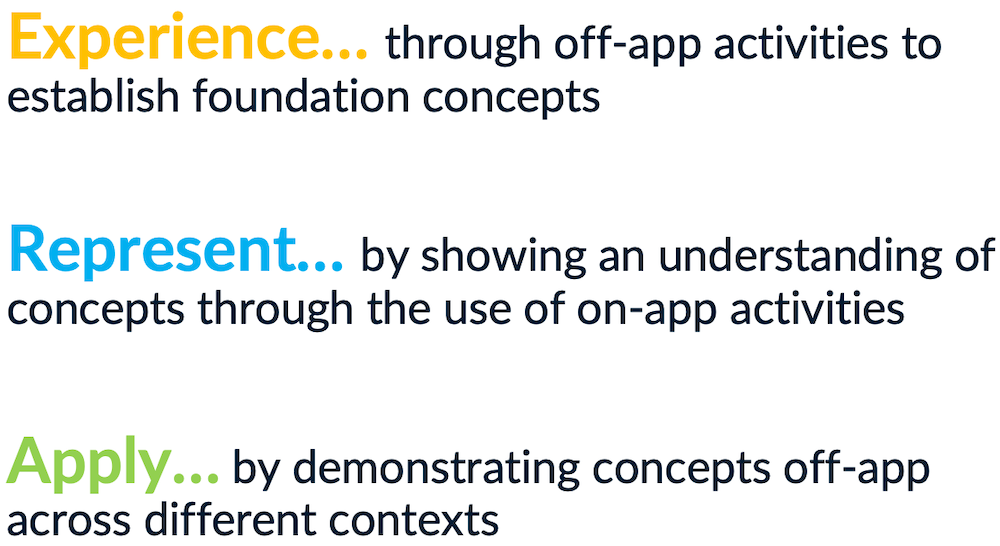Experience, Represent, Apply (ERA)
The ERA framework allows children to experience, represent and apply STEM concepts.

ERA framework
Experience, Represent, Apply
The Experience, Represent, Apply (ERA) framework was developed by Professor Tom Lowrie for use in early learning educational contexts. Tom was also a co-creator of the original Early Years Learning Framework (EYLF), published in 2007.
The ERA framework is embedded into every aspect of the ELSA Program, allowing children to experience, represent and apply STEM Practices and concepts in various ways.
One reason that the ELSA Program uses the ERA framework is to ensure that two-thirds of the activities are hands-on (non-digital) and can be done on the mat in a room, with one-third of activities taking place on a tablet (digital).
Step 1: Experience (hands-on)
Educators start with experiences in the real world that introduce children to a specific STEM concept. This might be on the mat in thier room or outside in nature.
These experiences help children understand what they already know, and also develop the appropriate language to communicate their knowledge. It also helps the educator to find out where children are at in their learning.
Step 2: Represent (digital)
Children engage with a digital activity on an ELSA app about the same STEM concept. For example, they might use the patterning app if they are learning about patterning.
The Represent step connects digital and physical environments to assist with the transfer of learning.
Step 3: Apply (hands-on)
After engaging with a digital activity on an ELSA app, children can apply what they have learned using different materials and in different situations. Again, this might take place in a room or outside in the playground.
Apply activities can then lead into further Experience activities, leading to a continual cycle of learning.


ERA’s inclusiveness
ELSA’s foundation of inclusiveness was built on the ERA framework.
This framework is critical to provide accessible entry points for all children, regardless of gender, cultural heritage, socio-economic status or experience of disability.
The ERA framework allows all children’s experiences to be scaffolded, irrespective of their previous levels of understanding.
Essentially, the ERA framework levels the playing field, ensuring that all children are included and can participate in ELSA Program activities.
Find out more about the ERA framework
You can find out more about the creation of the ERA framework in the article Experience, represent, apply (ERA): A heuristic for digital engagement in the early years on the British Educational Research Association (BERA) website.
